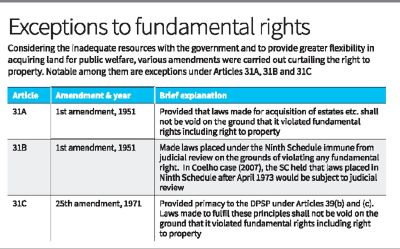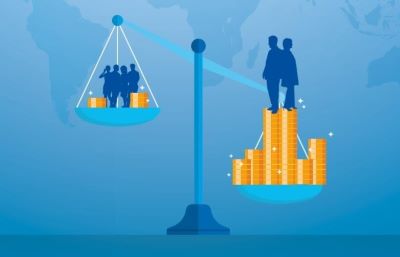Context:
In the midst of ongoing election campaigns in India, one of the central themes that have sparked vigorous debate is the redistribution of wealth. This contentious issue has drawn sharp divisions between the ruling government and the Opposition, with both sides presenting contrasting visions for economic justice and equality. At the heart of this debate lies the interpretation of the Directive Principles of State Policy (DPSP) enshrined in the Indian Constitution, particularly concerning the ownership and control of material resources. Against this backdrop, the judiciary, represented by the Supreme Court, has stepped in by convening a nine-judge Bench to elucidate the constitutional framework surrounding this crucial matter.

Constitutional Framework:
The Indian Constitution, in its Preamble, sets forth the noble aspirations of securing social and economic justice, liberty, and equality for all citizens. Part III of the Constitution delineates fundamental rights, safeguarding individual liberties and equality before the law, while Part IV outlines the DPSP. Although the DPSP lacks enforceability in courts, it serves as guiding principles for governance, directing both central and State governments towards achieving societal welfare and economic parity. Notably, Article 39(b) and (c) within the DPSP advocate for the equitable distribution of material resources for the common good and caution against the concentration of wealth to the detriment of the masses.
Historical Context:
Initially, the Constitution safeguarded the right to property as a fundamental right under Article 19(1)(f), guaranteeing compensation in cases of state acquisition under Article 31. However, recognizing the necessity for land reforms and public welfare projects, subsequent amendments curtailed property rights through provisions like Articles 31A, 31B, and 31C. Judicial interpretations, notably in landmark cases such as Golak Nath (1967), Kesavananda Bharati (1973), and Minerva Mills (1980), delineated the delicate balance between fundamental rights and DPSP. The evolution culminated in the 44th Amendment, which redefined the right to property as a constitutional right under Article 300A, thus mitigating excessive litigation while preserving the state's authority to acquire property for public utility.
Current Debate:
The contemporary discourse on wealth redistribution mirrors India's economic evolution, oscillating between socialist policies and market-driven reforms. The initial decades post-independence witnessed a socialist paradigm, marked by land acquisitions, nationalization, and high taxation aimed at reducing inequality. However, the subsequent shift towards liberalization and privatization in the 1990s ushered in a market-oriented economy, fostering growth but exacerbating wealth disparities. Recent data indicates a stark wealth gap, with the top percentile holding a disproportionate share compared to the marginalized sections, accentuating calls for redistributive measures.
The ongoing electoral narrative underscores this divergence, with the Opposition advocating for pro-poor policies, including direct financial assistance and wealth surveys to address inequality. In contrast, the ruling party warns against reverting to punitive taxation regimes, framing the debate as a choice between economic growth and redistribution. Amidst these political overtures, the Supreme Court's intervention, through the formation of a nine-judge Bench, underscores the gravity of interpreting Article 39(b) and its implications on private resources, shaping the contours of future policy discourse.
Way Forward:
As India grapples with the imperative of inclusive growth amidst widening disparities, the way forward necessitates a nuanced approach. While acknowledging the merits of market-driven reforms in generating prosperity, it is imperative to ensure that the fruits of development are equitably distributed. Past policies, characterized by high taxation and regulatory constraints, underscore the need for innovation in crafting redistributive mechanisms that foster growth while addressing inequality. Crucially, any policy intervention must align with constitutional principles of economic justice and social equity, reflecting the foundational ethos enshrined in India's democratic framework.
Conclusion:
The debate surrounding wealth redistribution in India, amid the backdrop of ongoing election campaigns, reflects broader societal aspirations for economic justice and equality. Rooted in constitutional principles, the discourse navigates the delicate balance between individual rights and collective welfare, as enshrined in the DPSP. As the judiciary deliberates on the interpretation of these principles, the nation stands at a crossroads, grappling with divergent visions for economic development and social equity. Ultimately, the path forward lies in forging inclusive policies that reconcile economic imperatives with the imperatives of social justice, embodying the constitutional ethos of a pluralistic democracy.
|
Probable Questions for UPSC Mains Exam
|
Source – The Hindu







